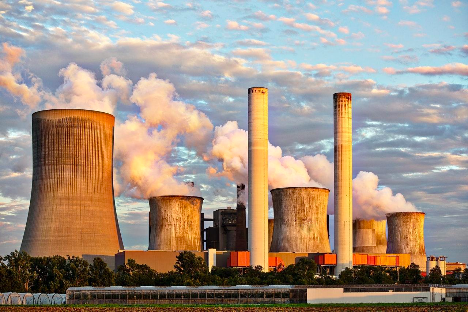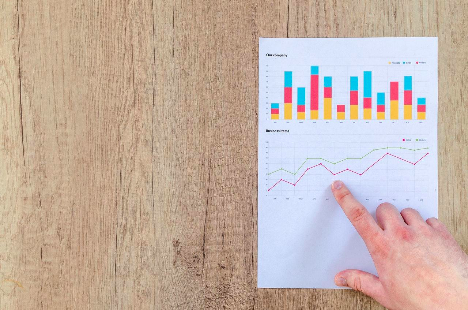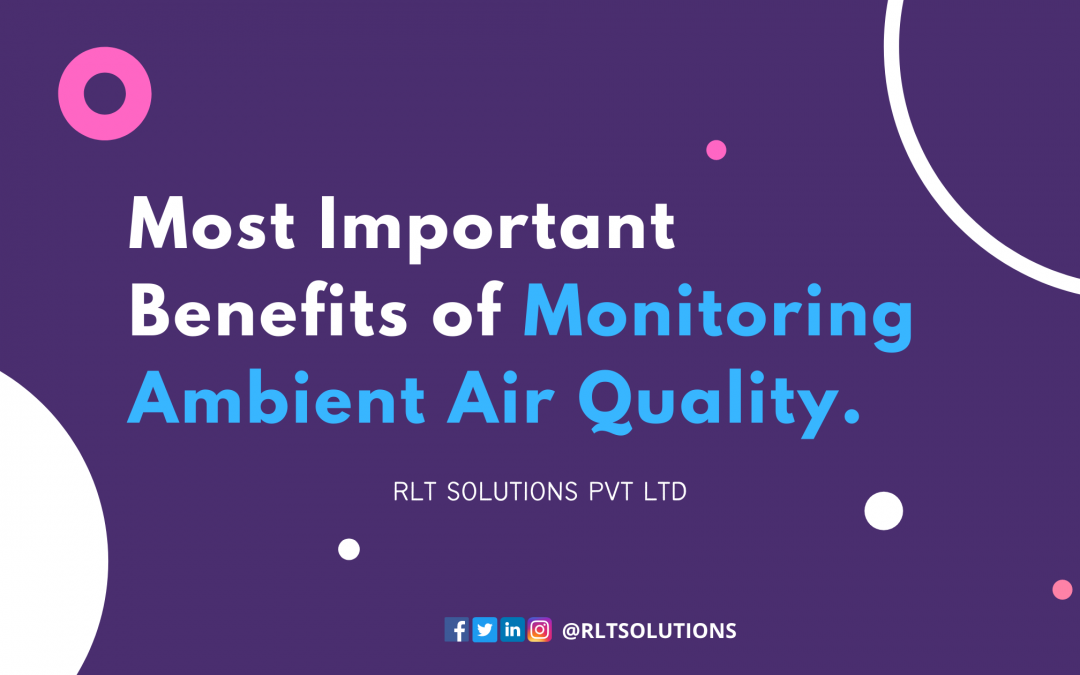The Quality of air is getting worse as years pass by, especially in cities due to emissions from Industries and urban transportation. The ambient air around us, contaminated by harmful air pollutants, has made it Irrespirable.

Research says that among the 30 most polluted cities in the world 22 cities are in India, and according to the WHO almost 99 percent of Indians breathe air that is above the WHO’s defined safety limits. How do we monitor these pollutants & control them from the source and conforming to PCB regulations, in order to protect the environment and life on planet earth, providing world security and sustainability?
Why Continuous Ambient Air Quality Monitoring?
Air quality monitoring is a process of evaluating the quality of air in the surrounding area, checking the effectiveness of control programs, and identifying areas for restoration.

Air Quality Monitoring System
Our Air Quality Monitoring System (AQMS) is specially designed to monitor ambient air quality. It is implemented to measure the concentration of air pollutants in the surrounding area and particulate matter continuously throughout the year. These may be installed at various places such as industries, hospitals, and communities through which we continuously analyze the air quality in the surroundings. To provide online data remotely to PCB Authorities or other agencies, we also provide wireless data transmission solutions using GSM wireless devices & any other type as required by Users. Air pollutants such as sulfur oxide, carbon monoxide, lead, ozone, particulate matter, and other harmful air pollutants can be monitored through AQMS. AQMS avoids major health problems caused due to air pollution.
Benefits of Monitoring Air Quality
Helps in determining harmful emissions & helps in their containment to protect human health.

Research has shown that there is a link between polluted environments and health effects. Studies observed that there is a decrease in lung function and an increase in heart attack due to increases in air pollution. According to the EPA High levels of air pollution affect people with asthma and other types of lung or heart disease. Old people and young children are especially vulnerable to health issues associated with air pollution. The effect of air pollution on human health also depends on various facts such as the concentration of pollutants in the atmospheric air, the amount of air taken in by anybody, and how healthy we are. Air Quality Monitoring has a significant role in overcoming health issues. Thus the data obtained from the monitoring process would assist in determining & reducing the impact caused by poor air quality on public health.
To Check Cities Meeting Air Quality Standards

The Air Quality Index is a tool to provide the public with timely and easy-to-understand information on local air quality and whether air pollution levels pose a health concern used by EPA and other agencies. AQI used to evaluate and classify the area based on the concentration of air pollutants and level of pollution.
| AQI index | Air Quality |
| 0 to 50 | Good |
| 51 to 100 | Moderate |
| 101 to 150 | Unhealthy for Sensitive Groups |
| 151 to 200 | Unhealthy |
| 201 to 300: | Very unhealthy |
| 301 to 500 | Hazardous |
Thus, with the help of air quality monitoring data, we can determine if an area is meeting the air quality standards devised by CPCB, WHO.
To Develop Geographically Data based on the Air Pollution Level
The quality of air varies across geographic locations and weather conditions along with air pollution sources which affect the quality of air. Thus air quality at different locations at different times varies.
There are 2 ways to classify the ‘pollution hazard levels’ at any areas which are facilitated with emission monitoring and controls, thereby designating them as

- Area with less source of pollution and having a low air exchange rate
- Area with less source of air pollution and having high air exchange rate.
- The first with a low air exchange rate will have a poorer air quality than the second area because the first area causes the pollutants to build up in that area.
Thus quality monitoring helps to identify the polluted areas, air quality levels across the location.
To Determine the Effectiveness of the Air Pollution Control Program

National air control programs like NCAP are organized to prevent, control, and reduce air pollution. It was recently launched by the Ministry of Environment, Forest, and Climate change. Air pollution has severely affected the country, which led to 30.7% of deaths due to air pollution. The basic objective of the NCAP is to spread awareness among the public, build infrastructure for air pollution management and expand monitoring networks. Thus Air quality monitoring would help in evaluating the efficiency of the air pollution control programs.
Conclusion
Air quality monitoring is a life-saving measure that helps to continuously monitor & control emissions through real-time data.
RLT developed an advanced Air Quality Monitoring System capable of measuring air pollutants with remote wireless transmission of online data and supervisory control and data acquisition systems.
Hope you find this blog useful and informative. Let me know what you think in the comment section below
“Get in touch with us today to learn more about our products and services”. Let’s help you prevent pollution & add value to global sustainability!.
Frequently Asked Questions
1.What is AQMS?
Our Air Quality Monitoring System (AQMS) is specially designed to monitor ambient air quality. It is implemented to measure the concentration of air pollutants in the surrounding area and particulate matter continuously throughout the year.
2. Where to install AQMS ?
These may be installed at various places such as industries, hospitals, and communities through which we continuously analyze the air quality in the surroundings.
3. What are the air pollutants monitored through AQMS?
Air pollutants such as sulfur oxide, carbon monoxide, lead, ozone, particulate matter, and other harmful air pollutants can be monitored through AQMS.
4. What is called air quality monitoring?
Air quality monitoring is a process of evaluating the quality of air in the surrounding area, checking the effectiveness of control programs, and identifying areas for restoration.
5. How are polluted areas classified using geographical data?
- Area with less source of pollution and having a low air exchange rate
- Area with less source of air pollution and having high air exchange rate.
- The first with a low air exchange rate will have a poorer air quality than the second area because the first area causes the pollutants to build up in that area.
6. What is called AQI?
The Air Quality Index is a tool to provide the public with timely and easy-to-understand information on local air quality and whether air pollution levels pose a health concern used by EPA and other agencies. AQI used to evaluate and classify the area based on the concentration of air pollutants and level of pollution.
7. What is NCAP ?
National air control programs like NCAP are organized to prevent, control, and reduce air pollution. It was recently launched by the Ministry of Environment, Forest, and Climate change. Air pollution has severely affected the country, which led to 30.7% of deaths due to air pollution. The basic objective of the NCAP is to spread awareness among the public, build infrastructure for air pollution management and expand monitoring networks.
8. How does air pollution affect human health ?
Research has shown that there is a link between polluted environments and health effects. Studies observed that there is a decrease in lung function and an increase in heart attack due to increases in air pollution. According to the EPA High levels of air pollution affect people with asthma and other types of lung or heart disease



Installation of air quality monitoring system is need of hour as far as country like India where air quality is so bad. RLT is doing good job for monitoring by developing a good instrumentations.